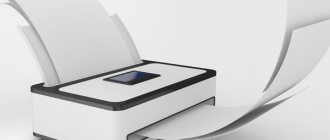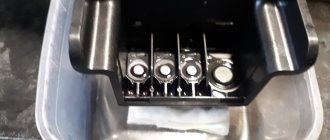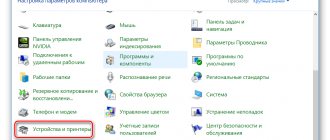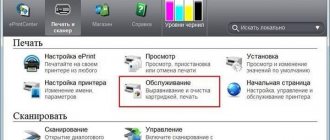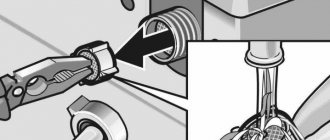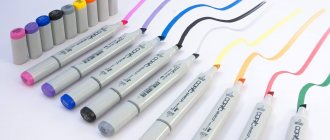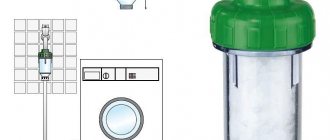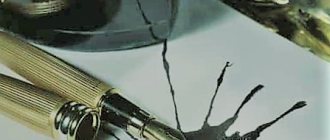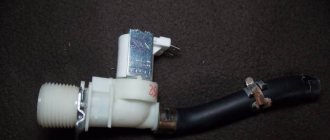Um... What are printer rollers?
Printer rollers are tiny rubber wheels inside your printer that move sheets of paper through the printer.
The roller that picks up paper from the paper tray is called the pick-up roller. The output rollers deliver the final printout. Depending on your printer, there may be internal rollers inside your device.
It is important to keep the printer rollers clean. If ink or toner gets on the rollers, your printouts will have streaks or smudges.
Luckily, cleaning your printer rollers is a quick and easy job! Give your printer some love! Printing is important! We love our printers as much as we love cute cats!
The paper pick roller pulls a fresh sheet of paper from the paper tray and feeds it through the printer.
Cleaning the Printer Case
If the outer surfaces of the printer body are dirty or dusty, turn off the printer and wipe it with a clean, soft cloth moistened with a weak solution of laundry detergent.
| Warning: |
When cleaning printer cabinet parts, never use alcohol-containing liquids or solvents; these substances can damage both the parts and the housing itself. Do not allow water to come into contact with the printer mechanism or electronic components.
[Back to top]
Cleanup shortcut failure
We tried a shortcut to clean the printer rollers, but it didn't work. According to our research (thanks YouTube!), you can wet the center of a piece of paper with isopropyl alcohol and run it through the printer. Theoretically, a damp sheet will scrape off excess ink or toner from the paper feed roller and exit roller.
We tried it by moistening the center of a piece of paper with isopropyl alcohol, front and back. We missed our "cleaning shortcut" on both the laser printer (Samsung Color Xpress) and inkjet printer (Canon MX922). Unfortunately, this method had little effect on our printer's rollers. The sheets came out of both printers as clean as they came in. Refusal! It's time to roll up your sleeves and clean your printer rollers the old-fashioned way.
Bad shortcut - running a piece of paper soaked in isopropyl alcohol through the printer should have cleaned our rollers... but it didn't.
Mister Muscle VS Platenclene
Quite rarely, problems with paper picking are associated with direct contamination of the working surface of the rollers. As a rule, paper feeding problems arise due to banal physical wear and tear - abrasion of the outer rough layer of the elastic band. In some cases, the roller drys out and cracks, for example on devices like the Samsung ML-2015.
Since the problem is complex, our task is not only to clean the rubber of the rollers but also to prevent its aging. Here, of course, the well-publicized special product Platenclene comes to everyone’s mind, which, according to the manufacturer and many experts, has the ability to not only clean, but also restore rubber.
We must assume that under the so-called “Rubber restoration” means returning its rough properties and extending its service life.
But is recovery actually happening?
It may well be that the initially prone to aging rubber of the feed roller on devices like the Samsung ML-2015 will be protected by Platenclene from cracking and drying out when applied daily, but in my experience, cleaning with this product does not have any effect on extending the life of the roller. For several years I specifically cleaned the roller of my Samsung ML-1520 home printer - problems with the paper still appeared, and cracks appeared on the sides of the rubber band. The roller has become more rigid to the touch. And this is with a cheap run of 4k copies!
Old can of Platenclene Frequent cleaning of rollers with Platenclene on medium-performance devices such as HP LaserJet Pro 400, 1320, Xerox WorkCentre 3210, Samsung SCX-4833 and others, again does not reveal any dependence of the roller life on the frequency of cleaning and the liquid used.
Constantly cleaning the rollers of productive machines like the Kyocera FS-4200 also does not give any visible results, and moreover, it does not have the slightest effect on the quality of paper gripping. If problems with feeding begin, 99% of the reason is physical wear of the rollers, and no amount of Platenclene cleaning will help.
Does Platenclene prevent premature roller wear?
Definitely not. Over many years of work, I have not noticed any connection at all between the product used to clean the rollers and their final resource. You can clean with warm water and soap, you can clean with rubbing alcohol, or whatever! If there is no noticeable difference in the resource, then it is reasonable to find out what cleans the rollers most quickly and efficiently, with minimal labor costs and as cheaply as possible?
What product cleans rollers best?
Years of daily cleaning of rollers have shown that Mr. Muscle works best. Thanks to the presence of not only alcohol but also various surfactants in its composition, it perfectly removes toner stains and putty from ADF rollers, and perfectly fights paper dust embedded in rough rollers. After cleaning, the rubber surface remains soft and smells pleasant :)
Everyone knows how to wash the pickup rollers well under warm fairy water. Imagine the familiar effect of water and soap and add the effectiveness of alcohol - you get Mr. Muscle.
The muscle does not dry out the skin of the hands, which will appeal to those who like to work without gloves. Guaranteed to contain no fine fractions or caustic surfactants. Gently cleans rubber and polymer surfaces. Tested by hundreds of cleanings. Muscle is cheap and available - you can buy it at almost any grocery store.
And also
I recommend my review “Muscle vs. Alcohol”:
Cleaning the Laser Printer Rollers
We opened the cover near the output tray of our laser printer (Samsung Xpress Color) and cleaned the output rollers with a cloth dampened with isopropyl alcohol.
We then removed the paper tray and lifted the printer to reach the paper take-up roller. (This is the large roller that pulls the paper out of the paper tray and feeds it into the printer.) We cleaned the paper take-up roller and replaced the paper tray.
That's all! The laser printer rollers are clean!
Isopropyl alcohol and a clean cloth - simple tools will do the cleaning!
How can I lubricate the rollers in the printer?
Alcohol is possible. The only thing that is important is: do not pour alcohol (otherwise the rollers will harden, or worse, swell), but rather wipe with a napkin slightly moistened with alcohol. And immediately wipe with a dry cloth.
Interesting materials:
What kind of rings do men wear? What kind of scarves are worn with a fur coat? What fruits are classified as Seed fruits? What fruits are included in the citrus subgroup? What soils predominate in the Tomsk region? What trains go to Crimea? What trains go from Krasnodar to Crimea? What indicators are relative? What wildflowers bloom in June? What minerals were found in Antarctica at the beginning of the last century?
Software head cleaning
The HP Solution Center program, which is installed from the included disk or downloaded from the official website, provides this feature. The Taiwanese manufacturer has made sure that the printer head is easy to clean.
You just need to run the program with the printer turned on. In the program menu, you need to go to the “Printer Control Panel”, where you can start cleaning the cartridge. If the printer has been idle for a sufficient amount of time, you can repeat the procedure several times until the print test no longer produces errors.
Windows also contains a similar utility, which can be found in the printer control panel by going to the printing settings. This is the first thing you need to think about when repairing your printer. This is how all HP models are cleaned, for example, the 3535 without disassembling it.
Features of devices from different companies
The operating principle of a printing device from any company is not significantly different from each other. Minor differences may only be in the form of spare parts and some printer components. Therefore, the instructions described in this article are applicable to any model of all well-known printer manufacturers: Canon, HP, Epson, Samsung, Xerox, Brother, Kyocera and many others.
Cleaning agents can be used without harm, but software cleaning will require a special utility for your printer model. In some cases, different versions of programs may be used for different series or devices released in different years by the same manufacturer. We recommend installing such software from the disk that comes with the device.
How to clean the Windows 10 printer head?
Right-click the printer icon on the taskbar and select Head Cleaning.
- If you don't have a printer icon on your taskbar, see the next section to add an icon.
- From the printer icon on the taskbar
- During the cleaning cycle, the power indicator flashes.
Interesting materials:
How does hyperkalemia manifest? How does potassium deficiency manifest? How does salmonellosis manifest in chickens? How are results measured in the standing long jump? How is an administrative fine paid? How does fertilization occur in rabbits? How do you change airports during a transfer? How does a job reduction happen? How does VAT refund work in Ukraine? How are dividends paid?
How to clean the inkjet printer head manually?
Inkjet printers, such as deskjet 2130, deskjet 3525, deskjet 5525, quickly lose printing ability when idle, but it can be restored by washing the print head.
Hewlett Packard cartridges are monoblock, which means they are not so difficult to clean, but they also quickly become clogged with ink. Flushing liquids are often used, which are used during soaking and are pumped with a syringe through the foam rubber.
The HP printer is designed to allow both of these methods. For black printers from this company, pigment ink is used, which means that the washing must be appropriate. HP color cartridges are not pigment-based, which means they already need a different wash.
Flushing
You need to make sure that the sponge is saturated with ink to the bottom of the cartridge. If this does not happen, the cartridge will not print. This is the main difficulty due to which non-professionals fail to clean the nozzles. After this, you can run the nozzle bleeding operation in HP Toolbox. This should make the print quality again.
If this does not help, you can rinse the cartridge with hot water. No need to wash the entire cartridge! Just hold it near a hot water tap for a couple of seconds. You need to wet the side where the nozzles are located, that is, the place where printing is directly carried out. Then the cartridge needs to be dried with non-hot air from a hair dryer. Immediately after this, insert the cartridge back and run the nozzle cleaning program several more times.
You can try cleaning the nozzles with pressure using an empty syringe without a needle. To do this, you need to close all the holes on the cartridge except one. If you insert a syringe into it and press the plunger, the paint will flow through the nozzles.
Inkjet printer print recovery options
Maceration
The cartridge nozzles are immersed in ordinary water for three days. The immersion should be no more than a millimeter so that the entire cartridge does not become unusable. After that, you can try printing test pages. If you have purchased a suitable cleaning fluid, that can also be used.
Boiling
If your HP printer head is dry, try holding it over steam. To do this, take the cartridge with pliers, hold it above the steam and immerse it in 1 cm of boiling water for 30 seconds.
Steaming
In this case, the cartridge is placed on a sieve, where it is steamed for 10 minutes.
Important! These methods can only be performed at your own peril and risk! There is no guarantee that after taking such measures, the cartridge will remain working; on the contrary, its validity period is guaranteed to be reduced. When repairing a printer yourself, you must understand the consequences of your actions.
Hot water jet treatment
You can place the printer heads under a gentle shower stream. The cassette is placed with the printing element down. Hot water is used. This usually helps dissolve baked-on paint.
Ultrasound
Ultrasonic baths with a special cleaning agent do an excellent job of removing hardened paint. The depth of the cleaning agent in the bath should not be more than 1 cm. After immersing the cartridge, you can turn on the ultrasonic cleaning device; half a minute of exposure is usually sufficient.
Cold cleaning
Without the use of temperature and technical means, thickened paint from the nozzles can be removed by the “Mr. Muscle” product and the like. Immersion in the cleaning liquid should be carried out according to the rules described above. Exposure to the part should not last longer than 3 hours.
If, after drying, the cartridge does not show a good result in the test print, you will most likely need a new one.
All these methods are frankly folk in nature and are not recommended for use by manufacturers of printing equipment.
Cleaning your HP printer
Cleaning an HP printer is a procedure that every owner of this device should know how to perform in order to carry it out independently and not spend money on maintenance at a service center. It should be performed regularly, no matter how often it is used at work. The so-called “Full Cleaning” is recommended to be carried out after carefully studying the instructions or reading this article, even if you are confident in your knowledge of the structure of computer equipment.
How to clean the charge roller (PCR) and whether it is necessary
I am not a fan of using liquid for it. I just take a paper towel and wipe it clean until the toner marks on the paper are very faint.
My practice shows that this is enough. Although I used to like to “bathe” the charge roller in a glass cleaner containing isopropanol (if I’m not mistaken, it’s honey alcohol).
But over time, I began to notice that the fewer liquids you use when cleaning cartridges, the less likely it is that printing defects will appear after refilling. That’s why my motto now is: wipe it dry and it will be good!
The same applies to the squeegee (cleaning blade). I wipe only the metal part with a dry cloth. By the way, in the photo above you can see that this blade is yellow.
This indicates its long-term use. The silicone has already “dried up” and may no longer cope with its responsibilities in the future. When used on heavily loaded printers, it is better to replace such a blade.
In the next picture, arrows show the bushings of the charge shaft and the contact of the photodrum, which also require mandatory cleaning. Well, I’m generally silent about the fact that you need to empty out the mining bunker.
How to clean an HP printer
The main reason for malfunctions, as well as deterioration in print quality for almost all printers, is the accumulation of dust and the ingress of small debris into the internal working part of the device. This can happen either when inserting paper (especially if it does not meet the quality requirements of the manufacturer), when changing the cartridge, or due to a draft if installed incorrectly (in a corridor, next to an open window). Therefore, it is very rare to avoid contamination problems. When starting the cleaning procedure, it would be correct to divide it into several main stages and remember to be careful when handling fragile, expensive computer equipment.
Housing and external parts
First of all, de-energize the device by disconnecting it from the electrical network, while simultaneously wiping the power cord from dust. The cable connecting to the computer should also be disconnected to prevent damage to the input jack. Then you need to:
- Close all covers and remove any existing paper.
- Use a dry cloth or paper towel to wipe it dry.
Use a slightly damp, soft (non-scratch) cloth to wipe the casing and any protruding parts of the printer.
For stubborn stains, use a liquid detergent. It is best to purchase a special set for the care of office equipment. Don't forget to wipe the bottom of the printer, where most of the dust and dirt tend to accumulate.
Cleaning with a scanner
Many HP printer models are multifunctional devices and include a scanning device and even a fax for transmitting information using telephone communication.
Cleaning the scanner surface is done using rags and cleaning products that are used to remove dirt from computer monitors. In this case, it is necessary to remove dust and dirt around the perimeter of the glass surface of the scanner and make sure that there are no streaks or fingerprints left.
The rubberized gripping rollers of faxes are wiped with an alcohol solution and checked for the absence of stuck paper residues.
Cartridge seat
This is where accumulated dust has a negative impact on productivity and print quality. To carry out cleaning, you must do the following:
- Prepare a dry, lint-free rag.
- Open the cover and remove the cartridge.
- Clean the seat from dust and possible small debris.
- Inspect the contacts and, if they have traces of oxidation (white or brown coating), carefully remove it with a metal object (a paper clip will do).
- Clean the cartridge itself from dust.
Don’t forget to wipe the inside of the folded lid, otherwise when you close it, all the dust that has accumulated on it will again end up on the cartridge.
Paper pick-up and feed roller
This unit in printer devices is considered the most “fragile”; the slightest violation of its alignment leads to the so-called “chewing” of the paper. Often the cause of this defect is dust accumulated under it, but it should also be cleaned using special care without using excessive force, for this it is necessary:
- In the inside of the cartridge seat cover, you need to find an installed roller made of rubberized material.
- Having opened the snap-off side clips that secure this roller, it is necessary to dismantle it.
- To clean the surface of the guide roller, you must use alcohol solutions or purchase a special liquid.
- Install the cleaned roller in the reverse order, making sure to snap both latches into place.
After this, the cartridge is installed, the lid is closed and the electrical and computer cables are connected. Accordingly, the red and green signal lights on the device should light up, confirming its readiness for operation. Be sure to load the tray with printing paper of the manufacturer's recommended quality.
Starting the cleaning program
The developers of HP copying and printing equipment have provided software that allows you to clean devices automatically. To do this you need:
- Through the “Start” button, enter the “Control Panel”.
- Activate the "Printer Properties" menu.
- Through the “Print Settings” item, enter “Maintenance”.
- Click on the “Clear” command.
The system will automatically carry out all the necessary actions and notify the user about the end of the procedure. Please note that some HP printer models are equipped with a control panel (which includes a cleaning command) directly on the body of the device itself.
In automatic mode, basically, the printer head is directly cleaned, contamination of which has the most negative impact on print quality. More modern models are equipped with additional functions for cleaning rollers, nozzles and trays. You can find out about their availability and possible use through the menu of the printer connected to the computer in the “Maintenance” section. If these functions are available, test their operation and performance. For preventative purposes, alternate between manual and automatic cleaning methods when using the printer frequently; this will significantly increase the life of your device.
The entry was published on November 22, 2018 by Olga in the My Life category with the tags HP, Printer cleaning. Thank me by sharing the link with your friends on social networks:
What you will need
Since laser printers use powdered toner during the printing process, you will need to use several special tools to ensure complete removal of fine particles. Below we have outlined the special tools and equipment needed to effectively clean your laser printer.
Microfiber for collecting toner:
is a kind of disposable cloth that, when activated by stretching the fabric, has a non-oil coating that traps particles for easy removal.
Isopropyl alcohol:
– if not then regular alcohol, isopropyl alcohol is ideal for cleaning mechanical equipment as it evaporates quickly, leaving no liquid on the surface. Use it to ensure that there are no residues left after cleaning.
An air atomizer can be used to help reach hard-to-reach areas and blow out toner particles.
Dust mask:
– If inhaled, although not dangerous, powdered toner can sometimes cause irritation. Before opening the toner cartridge compartment, make sure the room is well ventilated and wear a dust mask to make sure you don't have any problems.
Latex gloves:
– if exposed to skin, the toner may cause irritation; wear latex or rubber gloves to prevent this.
– A toner vacuum cleaner (vacuum) is a powerful, portable device that can gently remove toner from inside a laser printer. It's extremely useful, although toner vacuums are expensive, which is why we've listed it as an additional tool. You can also use a regular vacuum cleaner, but be sure to use a disposable dust bag; this is very important so that it can be disposed of later.
To fill it well means to clean it well.
This is the paradox. Despite the fact that, in principle, refilling itself is a rather dusty business, it is very important to thoroughly clean all the working elements of the cartridge. This is the key to further high-quality printing. These things really like cleanliness.
And here the opinions of experts differ. Some say that the shafts (charge, magnetic) must be washed either with special liquids, or, if at home, at least with medical alcohol or a glass cleaner like “Mr. Muscle”. Others are completely against the use of liquids.
In this post I want to express my opinion and share some important observations with my little experience (about 2 years).
Let's look at the example of models HP 12A, 35A, 85A and the like. There are a lot of them on my farm. As you can see, these are real home conditions. Everything is done on newspaper.
